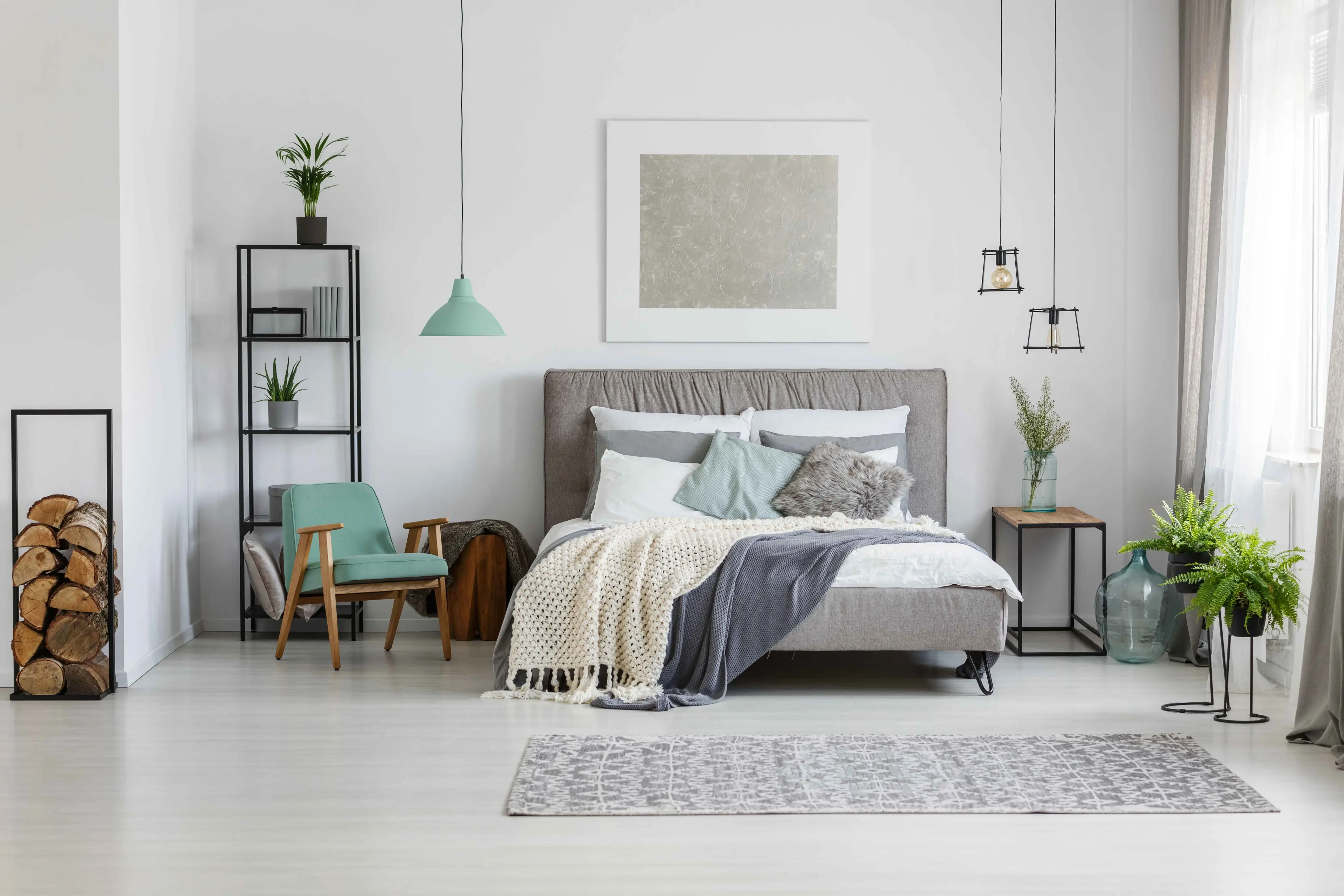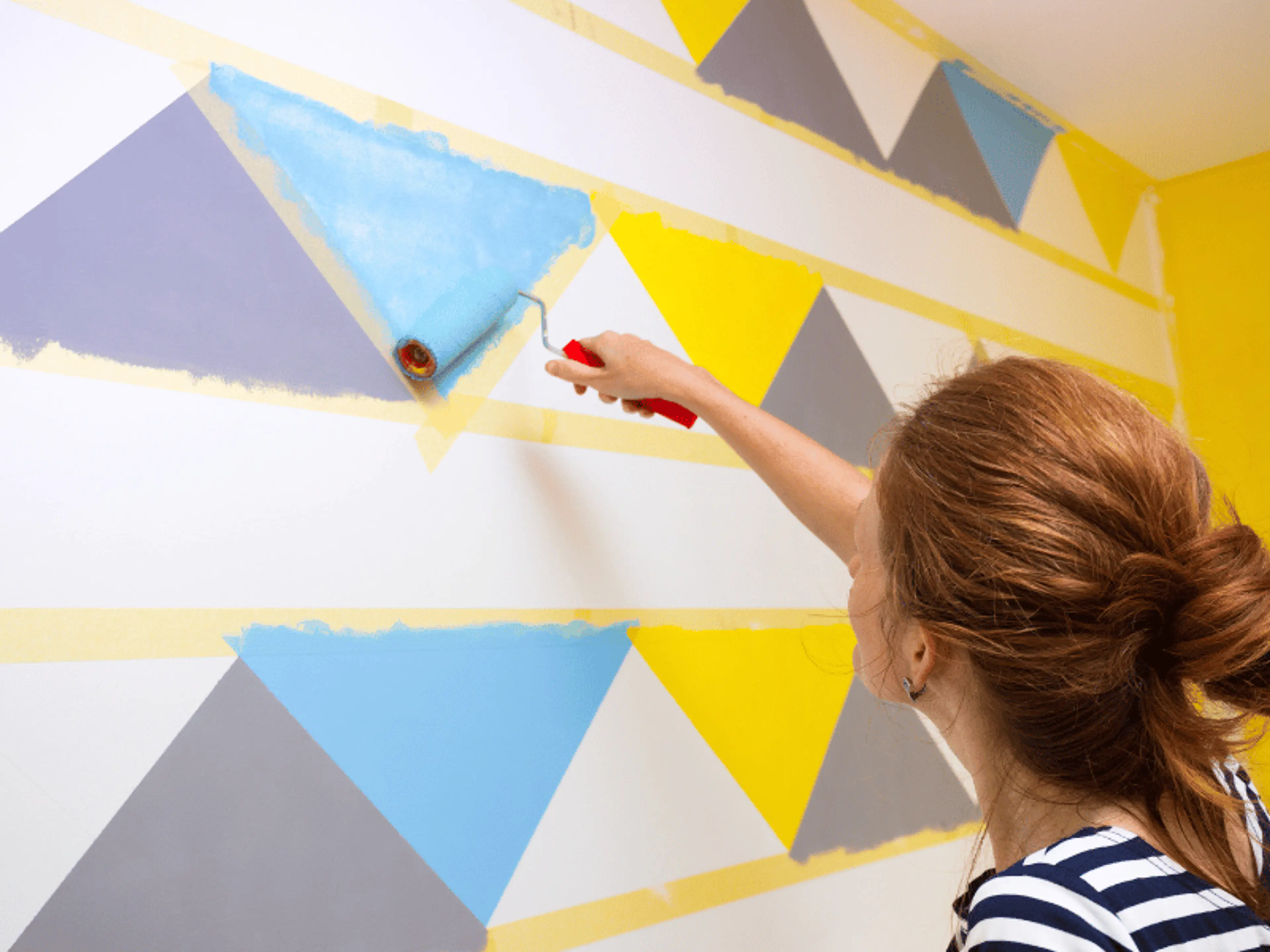Wall Paint Primer Guide For The Perfect Paint Job

 Jul , 2024
Jul , 2024- Interior
- 4 Min Read
Did you know why a professional painter’s work lasts longer than any ordinary person’s? They pay attention to the important details – like a wall paint primer. A few coats of this and the difference is starkly visible. But what is paint primer for the walls? How to use wall primer? And exactly what are these phenomenal wall primer benefits?
Let’s understand that and a lot more in this complete guide to wall paint primer.
What is Wall Paint Primer?
To begin with, we need to fully understand what a wall paint primer really is.
Wall paint primer is a coating that is applied to the wall before the actual paint. This acts as the foundation for your paint job. It comes under the surface preparation step and isn’t exactly mandatory but does wonders for the life and quality of the final finish. There are different types of interior primer and exterior wall primer.
What exactly are the wall primer benefits and what qualities make for the best wall paint primer? We’ll see that in the following sections.
Why You Need a Primer: Benefits Of Using Wall Paint Primer
Improved Paint Adhesion
You can look at wall paint primer as the glue for paint. When applied to the walls before painting begins, it helps the paint stick better to the surface.
Why more powerful sticking paint is better is obvious:
- Prevents the natural process of paint cracking and peeling with time.
- Helps paint stick to the more difficult surfaces like glossy or smooth walls.
- Gives a smoother finish.
Enhanced Durability of the Paint Job
What is the use of primer on wall? It adds an extra layer of protection.
- As seen above, wall paint primer prevents paint from cracking and peeling – which naturally improves the durability of the paint job.
- Primer makes the paint more resistant to moisture and humidity.
- Subsequently, primer helps increase the lifespan of your wall paint, lowering the risk of paint fading as the years pass.
Better Coverage And True Color Representation
The best wall paint primer helps the paint cover the wall evenly, elevating the quality of paint coverage. This simple change truly changes the way the colour appears on the walls of your home. Even on darker surfaces, it somehow manages to retain its appearance and do a better job.
Using special types like white primer paint for walls like BP White Primer will also fortify and strengthen the pigmentation to give a stronger finish.
This one of the many wall primer benefits is also a great way to save money on the extra paint coats you would otherwise need to get the same results.
Types Of Wall Paint Primers
Interior Primer
Designed for indoor use, interior primer is created to handle conditions that one would normally face inside the house.
- Interior primer provides a smoother base for the wall paint.
- This primer works well with wood, including furniture, and previously painted surfaces.
- Many a time, people want their wall paint to cover ugly stains from oil, crayons, etc. The interior primer does a great job of covering up such unwanted stains effectively.
Exterior Wall Paint Primer
Exterior wall primer is the one that is created to withstand harsh weather like torrential rain, extreme heat, powerful wind, and so on.
- Exterior wall primer assists your exterior wall paint in fighting against rain, sun, and temperature changes.
- It also does an excellent job of preventing the growth of fungi and bacteria on your walls.
- Ultimately, exterior wall primer extends the lifespan of your exterior wall paint.
How To Choose The Right Primer For Your Project
There are a number of factors to look at to decide what the best wall paint primer would be for you. We’ve listed below the main ones:
- Surface Type: There are different types of surfaces to which wall paint primer can be applied, from wall to cement and more.
Every surface will need a different type of primer and we recommend not using the same one across all types if you want to maximise the wall primer benefits. Start by identifying the surface types that you will be painting, then select the wall paint primer most suitable for each surface. Use a cement primer like BP Cement Primer WT for concrete surfaces. - Location: Interior primer and exterior wall primer have different purposes – for the former, moisture and weather resistance aren’t the biggest threats, so choose your primer according to the location of the application.
- Paint Type: While this one might be obvious to some, it is just as important to remember. For the best results, match the wall paint primer type to the type of paint you’ll be using, be it oil-based or water-based.
Step-by-Step Guide to Applying Wall Paint Prime
- Surface Preparation: Start with the obvious one – surface prep. This means cleaning the walls and smoothening out cracks, if any.
- Wall Paint Primer Type Selection: Next, you will need to put some thought into the paint type you’ll be going for. After that comes the wall paint primer selection.
- Application: Here’s where the main part begins. Stir the primer carefully and properly to make sure there are no lumps. Apply a thin coat first.
Read the instructions carefully before starting with the actual application work. - Inspection: Next, look at the results of your first coat before moving ahead. See if a second coat is really necessary and if the brush/roller strokes are looking good.
- Finishing Touches: Once dry, you could gently sand the primed surface to give it a smooth finish.
Common Mistakes to Avoid When Using Wall Paint Primer
- Choosing the Wrong Wall Paint Primer Type: Don’t use an interior primer for exterior projects, don’t use a wood primer on cement, and so on.
For example, a primer like BP Exterior Cement Primer is meant for external concrete walls and should be used as such. - Applying Thicks Coats: You end up creating ugly uneven surfaces if you apply heavy-handedly or go for too many coats.
- Not Allowing Enough Time for the Primer to Dry: Do not rush the drying process or you will experience poor adhesion and finish.
Conclusion
Achieve a Flawless Finish with Berger’s Primers:
For a flawless paint job, choose Berger’s primers. Use BP Cement Primer WT for interiors, BP Exterior Cement Primer for exteriors, and BP White Primer for a smooth base. Try Berger’s primers today for professional results!
check for any query you have about the blog
Frequently Asked Questions
It serves as a paint glue: using a wall paint primer, you can help wall paint stick better. This reduces paint peeling, cracking, and so on.
Cement-based primers are suitable for concrete. Use them when painting basements, garages, etc.
An exterior wall primer offers protection against weather conditions and improves paint strength.
While white primer paint for walls is rather versatile, it might not be the best option for all surfaces. Choose the primer based on the wall type (wood, concrete, etc.) and the paint type.
Look at the wall surface type, location (interior or exterior), and paint type.



